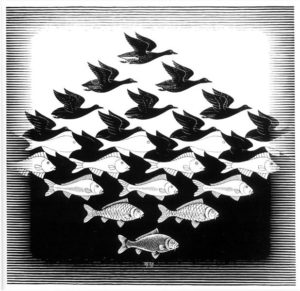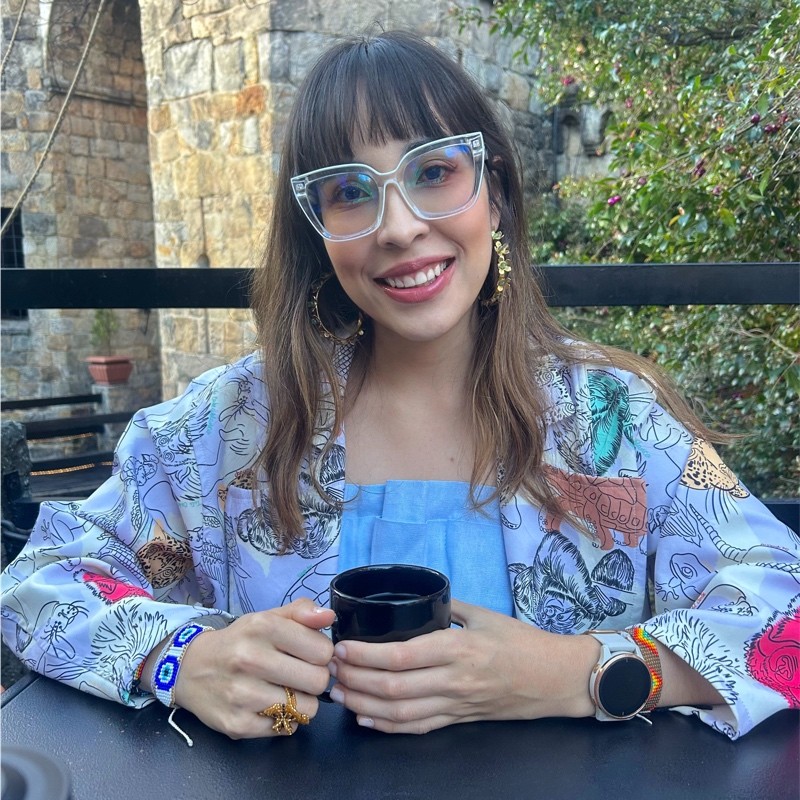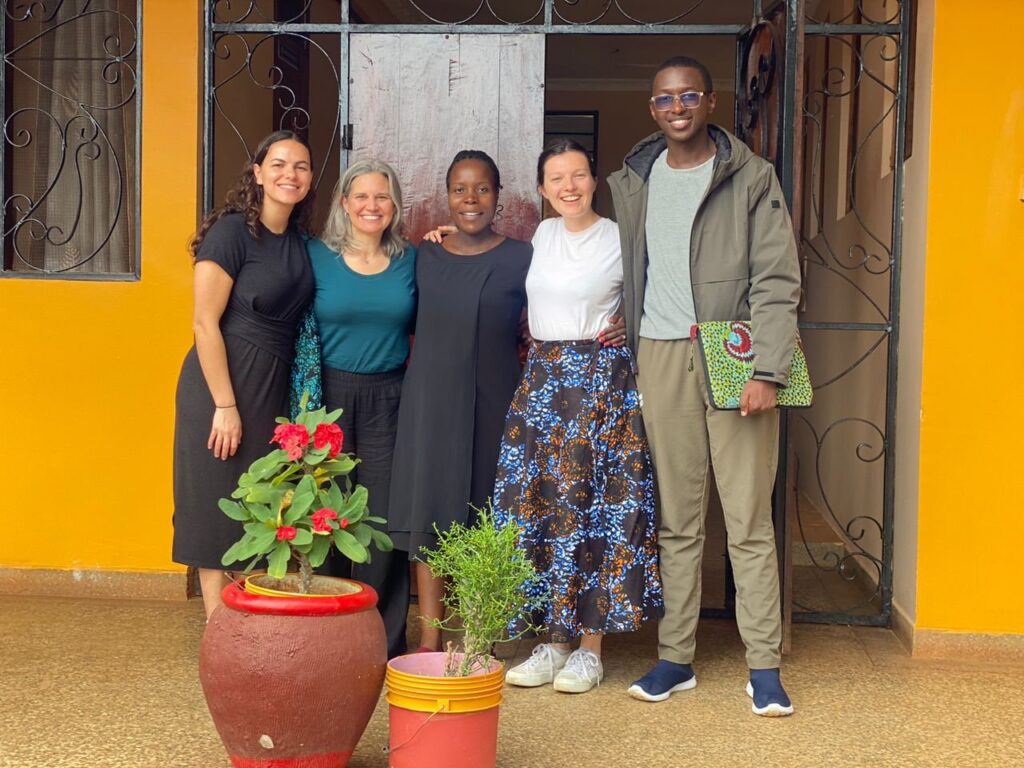In-person interaction is now largely unavailable to us. Can digital connections ever be as rich?
 In visual art, the term “negative space” refers to the space around the subject of an image. M.C. Escher’s Sky and Water I provides a vivid example: the birds at the top of this graphic print start out as positive space, with the white background around them forming the negative space; as the eye moves down the print, that white negative space morphs into an entirely new shape of its own—fish—at the bottom, and it is the birds that end up feeling more abstract.
In visual art, the term “negative space” refers to the space around the subject of an image. M.C. Escher’s Sky and Water I provides a vivid example: the birds at the top of this graphic print start out as positive space, with the white background around them forming the negative space; as the eye moves down the print, that white negative space morphs into an entirely new shape of its own—fish—at the bottom, and it is the birds that end up feeling more abstract.
For many of us, in-person connection was the positive space in our lives, pre-pandemic. That is, it was the primary “subject” around which our days were organized, as most of our formal, informal, social, and transactional interactions occurred in the same physical space as others. But the COVID-19 pandemic, and resulting stay-at-home and social distancing orders, have, for many of us (though not all), slashed the number and depth of those in-person encounters almost down to nothing, and the ones remaining have completely changed in flavor and tone. (It’s pretty telling when the most human interaction you have over the course of a week is a furtive dash around the grocery store at 6a.m. on a Saturday.) Unlike the gentle evolution of the images in M.C. Escher’s print, our online presence and engagement have been thrust into the forefront of our lives abruptly, and with that shift come questions about what virtual connection can look like at its best—and how we can get there.
Of course, it didn’t take COVID-19 to move the world to a more virtual place. All kinds of group convenings, from meetings and conferences to hangouts and reunions, were already being replicated and explored on online platforms. But, to me, these mediums were always meant to supplement their in-person counterparts. Needless to say, there are gradations in levels of online engagement: reading an article in a publication you typically find partisan is different than replying to a conversation thread on Reddit, which in turn is different than engaging in a digital meetup. But whatever the form, it seemed like online channels of communication had a “second-best” quality. They were the inferior facsimile, a less preferable way to engage, particularly on sensitive or challenging topics. We’re all familiar with the ways in which online interaction can go off the rails and devolve into ugliness, creating a “negative space” in a different sense. Indeed, this is turning out to be a persistent problem on some of the major platforms.
Of course, it would be unfair to generalize across the board—there are plenty of examples of innovative online platforms actually facilitating discussion of difficult issues, as well as tips on how to increase the chances of success in online difficult conversations. Perhaps your preference for discussing challenging and sensitive topics is actually for virtual dialogue as opposed to in-person discussion with friends, family, or acquaintances.
The dictionary definition of the word “virtual” is, “being in essence or effect but not in fact.” The essence. The almost. There wasn’t anything terribly wrong with this when we had a better, brighter alternative of in-person connection. But when on a video call, or in a conversation thread, the images are grainier (literally), the intention and inflection more ambiguous, the humanity perhaps a little more elusive. We receive constant reminders that we’re not actually sharing physical space. We have one foot (well, both feet) squarely in a place that is likely familiar, and even comforting—our homes.
So what impact does physical proximity and in-person interaction have on our ability to relate to and understand people whose views, perspectives, and ideas are unfamiliar or anathema to us? When I think of immersive in-person connection, the first thing that comes to mind is Hands Across the Hills, a program that began after the 2016 election in which residents of Leverett, Massachusetts, and Letcher County, Kentucky, traveled to one another’s communities to learn about each other’s lives and engage in dialogue about political issues. At least based on some participants’ reflections, the program had a profound impact, and resulted in long-lasting connections and friendships. So why did it work? It’s hard to get around the conclusion that one of the key factors for its success was the aspect of physically uprooting oneself in order to literally enter a different space. That physical commitment enabled people to move away from their comfort zones, and opened the door to sharing the breadth and depth of participants’ lives beyond their political opinions.
Theoretically, online engagement, too, offers an enormous opportunity to connect with people outside one’s own geographical area. But the success of these efforts depends on our ability to bring the same care, curiosity, and patience to our online engagement as we have to our in-person interactions.
For myself, as I contemplate a foreseeable future in which most of my work and social interaction occurs online, I have to confess that an uncomfortable truth has surfaced: the internet unnerves me. For every hopeful story of long-lost relatives reuniting, or strangers finding common ground, it seems like there’s an example of a public figure being needlessly trolled, an article about Zoombombing, or a baseless conspiracy theory that’s gotten undue attention on Twitter. Before I de-joined social media platforms, I comforted myself from the exhaustion of online engagement by remembering that we are all more than our online presences, and at least we can get to know one another in person.
What can we do now that that is unavailable? If online engagement is in-person dialogue’s anemic cousin, how can we reframe to be more compassionate with this medium, and make it work for and with us as we seek to connect? How can something like Hands Across the Hills possibly be replicated online?
I’m not sure what the right answer is. But perhaps this is the wrong question entirely. The question is not, how can we make the negative space just as beautiful as the default that we’re used to, but rather, how do we appreciate, innovate, and turn our creative energies toward this medium? For some of us, perhaps we haven’t held our online interactions to the highest standards compared to in-person engagement. Perhaps we haven’t shown virtual connection the same level of care—or even effort—because we just didn’t need to. But if we really want to capture the “essence” of in-person connection, the challenge is to let go of some of the apprehension we might feel about engaging online, and nudge ourselves to bring our more curious, compassionate, optimistic selves into online spaces. This may already be happening: some emerging data seem to show that collectively, we are gravitating towards online platforms that enable live interaction, as opposed to passive or asynchronous engagement. But wherever our comfort zone lies, we are all capable of taking one step further towards meaningful interaction and learning. Read sites like www.allsides.com that present news from multiple perspectives. Reply to a political thread with a nuanced perspective rather than disengaging or sending a kneejerk response. Maybe now is even the time to try engaging in a virtual discussion group through organizations like Living Room Conversations or Braver Angels.
At this point, it’s hard to discern what our online engagement will look like in the era of social distancing—or if it will even feel like it changed at all. But it seems clear that the choices we make each time we open our browsers will determine the contours, character, and shape of this negative space, and whether it will ultimately form its own stand-alone image that we can be proud of.









